It can be said that, in the 16th century, the Gonzaga court in Mantua nurtured a real passion for labyrinths. Those who walk through the Hall of Horses in the Ducal Palace and linger on the east wall will easily notice a fresco depicting Mount Olympus protected by a water labyrinth: this is the oldest known labyrinth in the Gonzaga city. It was discovered in the nineteenth century, after a restoration that brought the painting to light: initially, the scholar Clinio Cottafavi in 1928 attributed it to the court painter Lorenzo Leonbruno, but it was finally assigned, in 2002, by Stefano L’Occaso to the German painter Bartholomaus Dill Riemenschneider. However, this is not the only maze in the Ducal Palace: the most famous is that of the Sala del Labirinto (Labyrinth Room ) inside the Ducal Apartment, with its ceiling featuring the decoration reproducing, precisely, a labyrinth, from Palazzo San Sebastiano.
It is a wooden ceiling that was transported here in 1601, at the behest of Vincenzo I Gonzaga, who had the Domus Nova of the Ducal Palace renovated, effectively opening the new Ducal Apartment, the largest and most airy in the palace, executed to the design of the court architect (as well as very talented painter) Antonio Maria Viani, who had been present in Mantua since 1592. The labyrinth, placed here at the time when Vincenzo I was fighting in Hungary against the Turks, as the inscription decorating it recalls (“Dum sub arce Canisiae contra turcas pugnabat,” i.e. “While he fought under the fortress of Canissa against the Turks”), it features gilded walls on a blue background, leading the visitor to think that what he is observing is not an earthly labyrinth but a heavenly labyrinth. The corridors are decorated with the motto “Forse che sì forse che no,” probably an allusion to the obstacles that must be overcome in life to reach an end, obviously symbolized by the labyrinth: the motto is taken from an amorous frottola by the composer and cantor Marchetto Cara, published in Venice in 1504. Cara, who was active at the court of the Gonzaga family in Mantua as well as at that of the Medici family in Florence, was one of the leading musicians of his time: something of a musical star of the time, and his frottole (the genre of song most in vogue in the fifteenth and sixteenth centuries) were among the most celebrated of his time.
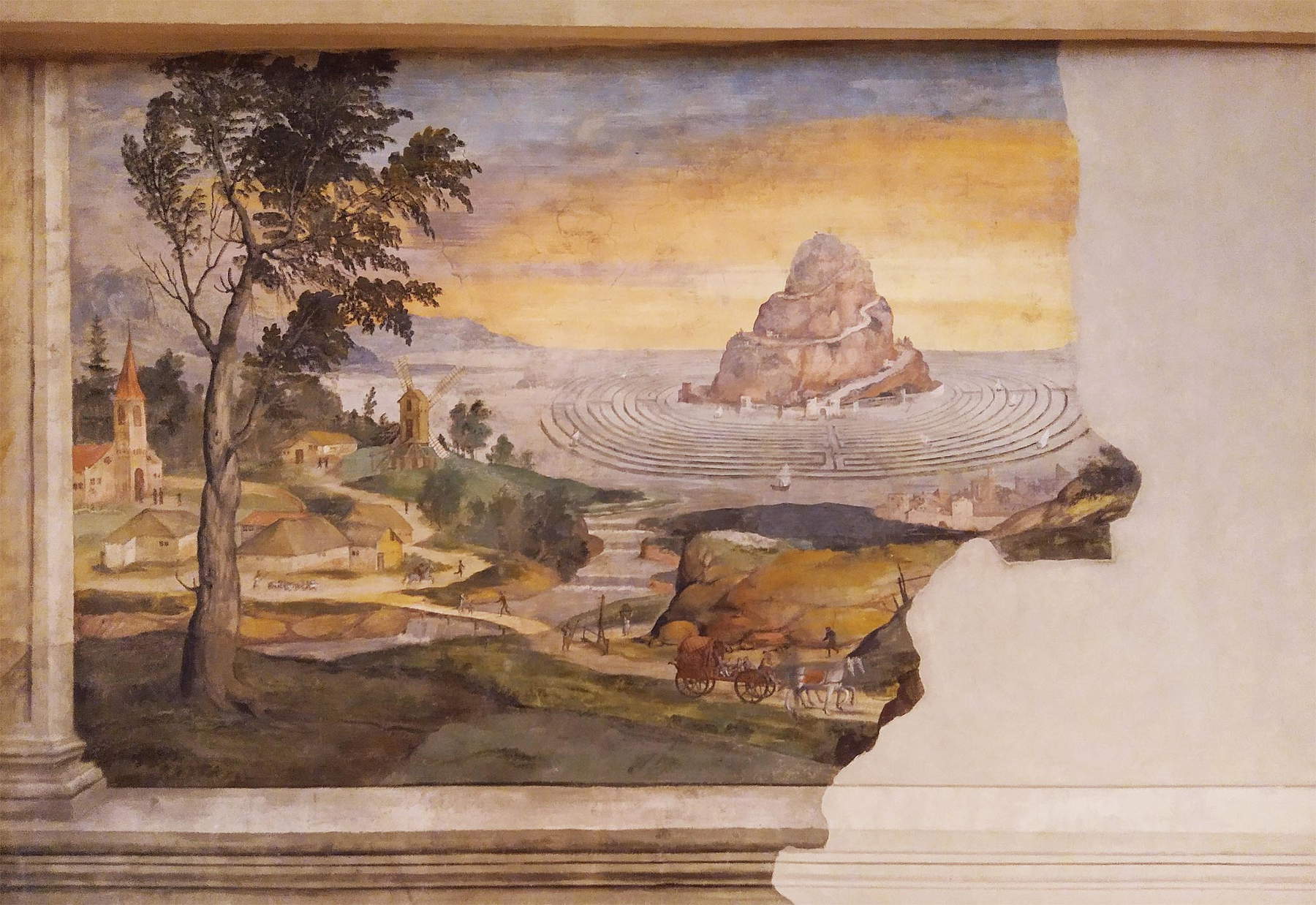 The labyrinth
The labyrinth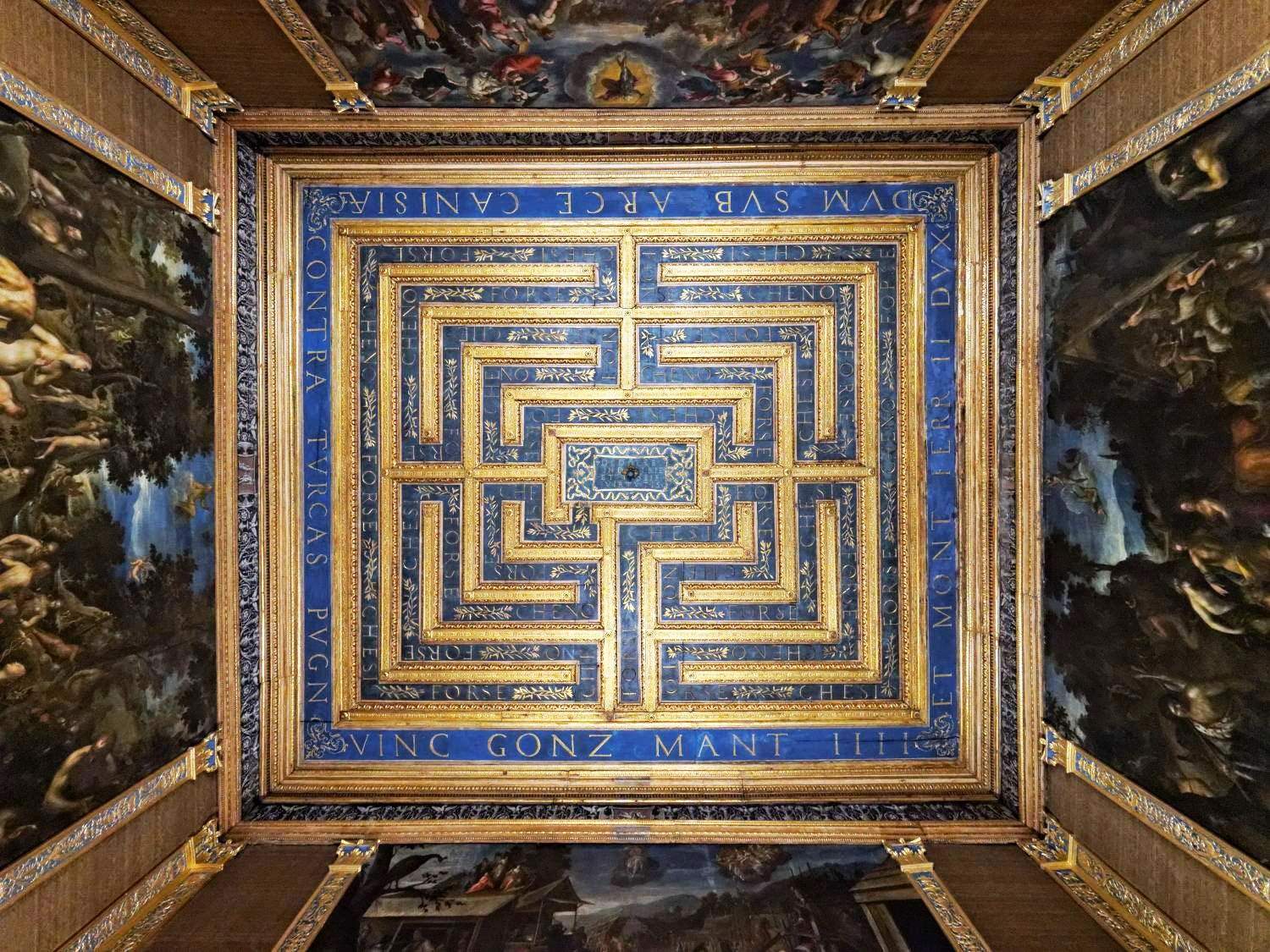
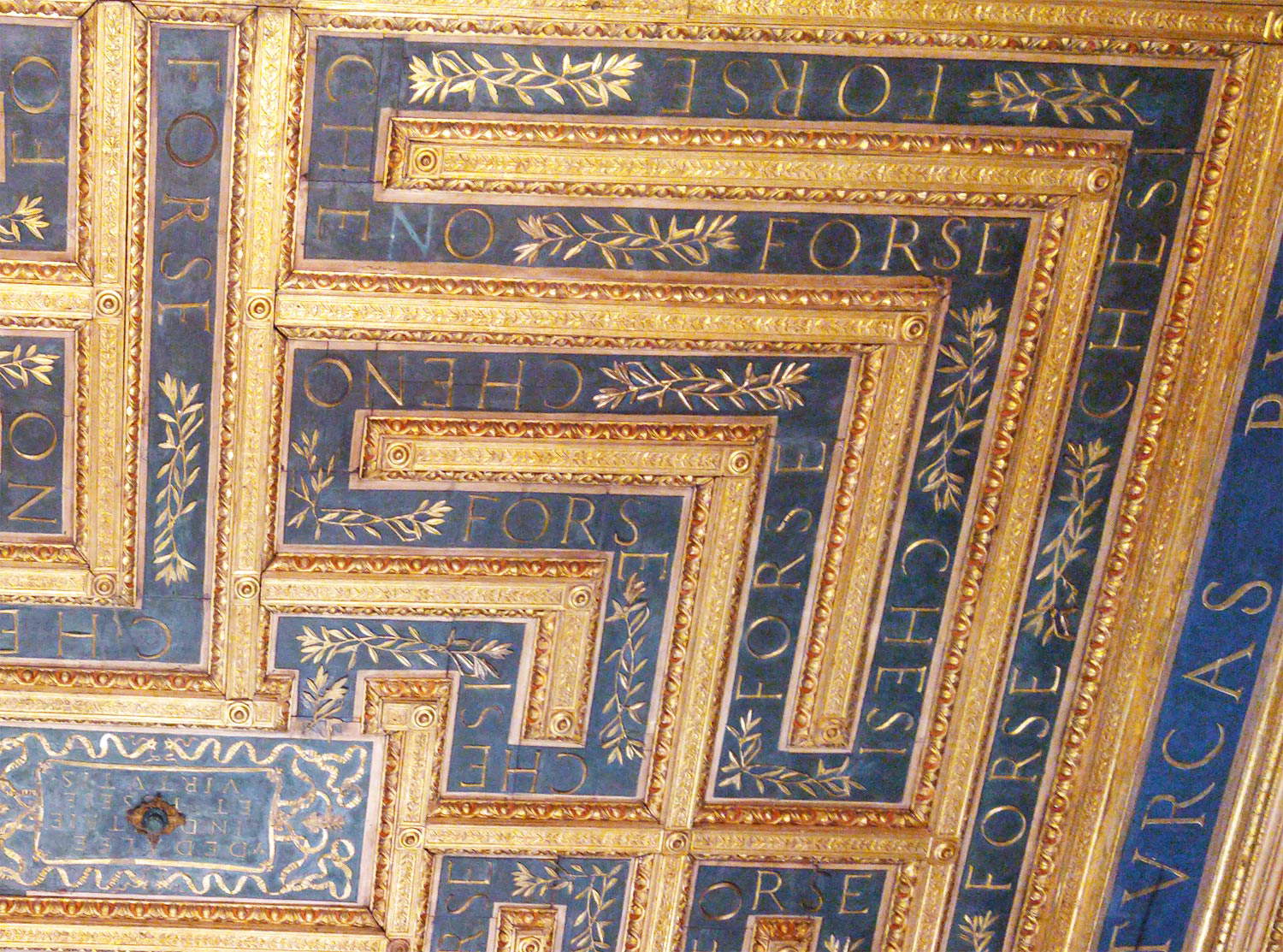
In reality, we do not really know what meanings are concealed by the labyrinth in the Doge’s Palace. Marchetto Cara’s frottola was about love, and specifically the phrase alluded to the situation of uncertainty in which a lover finds himself who does not know if he is reciprocated by his beloved: “Forsi che sì, forsi che no / El tacer nocer non po / Forsi che sì... / Non fi a el mondo ognhor così / Forsi che sì, forsi che no / El tacer nocer non po / Forsi che sì... / Non fi a el mondo ognhor cossi. / Forsi chi ode non intende / Questo vario mio disgresso / Che tal spesso altrui riprende / Che non pensa de si stesso; / A ciaschun hogi è concesso / De parlar, salvo che a mi. / Forsi che sì, forsi che no / El tacer nocer non po. / Forsi che sì... / Non fi a el mondo ognhor così. / Questo mondo falso errrante / Horamai è conosciuto / Pur l’amor è lo imperante / Dalo ignaro non veduto / Ogni pel fa amor canuto / Poi si vol fa anchor falo. / Forsi che sì... / Va canzon solo da coloro / Che dal mondo hanno contrasto / Che’l rubin ligato in oro / Per el gallo è tristo pasto; / Chi ha bon vento drizi el trasto / Ch’io coi i remi i me ne vo. / Forsi che sì... ”. The fact that the labyrinth comes from Palazzo San Sebastiano and the year of publication of the frottola lead one to think that the work dates from the time of Isabella d’ Este, to whom one of the court poets, Serafino Ciminelli, also known as Serafino Aquilano, dedicated a sonnet “sopra un laberintho che portava la marchesana de Mantova per impresa,” where the labyrinth alludes to amorous passion: “Come alma assai bramosa e poco accorta, / Che mai aveva visto amor se non depinto, / Disposi un di cercar suo laberinto, / Vedere el monstro, e tanta gente morta. // But that thread of reason that I had for escort / Of which all the blind place was girded / Immediately, alas, was broken and vanquished by him, Such that never more did I find the door. // So I was taken, and for my more comfort / Had still with him the dark parca / I cut that vital thread that does me wrong. // And to show that love has no measure / And breaks ogne reason, pre insegna el porto / That it is manco error who another’s good procures.” The labyrinth of the Ducal Palace could therefore be nothing more than an allegory of love and in particular of the torments caused by love. And it is precisely a passionate and overwhelming love that is the protagonist of the novel Forse che sì forse che no that Gabriele d’Annunzio, inspired by a visit to the Doge’s Palace in 1907, published three years later, in 1910: in several parts of the novel moreover, the labyrinth is mentioned as the protagonists walk through the room of the Doge’s Palace.
All these suggestions will provide the cue for a real maze of greenery that is created in the 1930s on the outskirts of Mantua: this is the labyrinth of the Bosco Virgiliano, the public park that was opened during the years of the fascist regime to celebrate the bimillenary of the death of Virgil, the great Mantuan poet. The Bosco Virgiliano covers an area of five hectares located between the Mincio River and the Palazzo Te district: the entrance is located along the busy state road leading to the center of Mantua, just a short walk from Viale Te. By virtue of its location, a little far from the center, it is not among the most frequented places in the city, but it is nonetheless a green area of great value, also by virtue of the many redevelopment operations that have affected it recently, starting with the planting of 90 new trees in November 2022 and the provision of a new, modern lighting system with adaptive lighting made by TEA Rete Luce srl: the new system reduces consumption when no passerby is in the area, thanks to a network of sensor cameras installed by Bosch, which detect presences and thus adapt the light according to the park’s attendance, thereby also reducing light pollution. The Bosco Virgiliano is now a large park that is home to nearly three thousand trees (including five hundred conifers) and about fifteen thousand shrubs of different species, one of the city’s main green lungs.
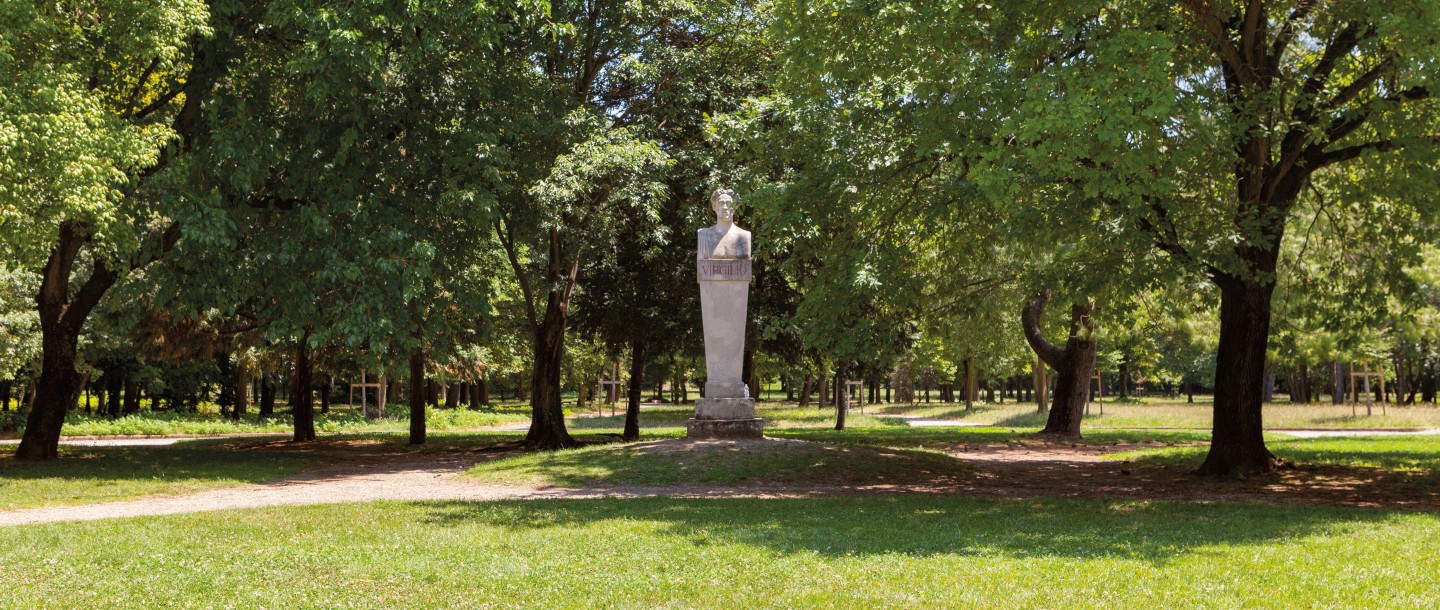
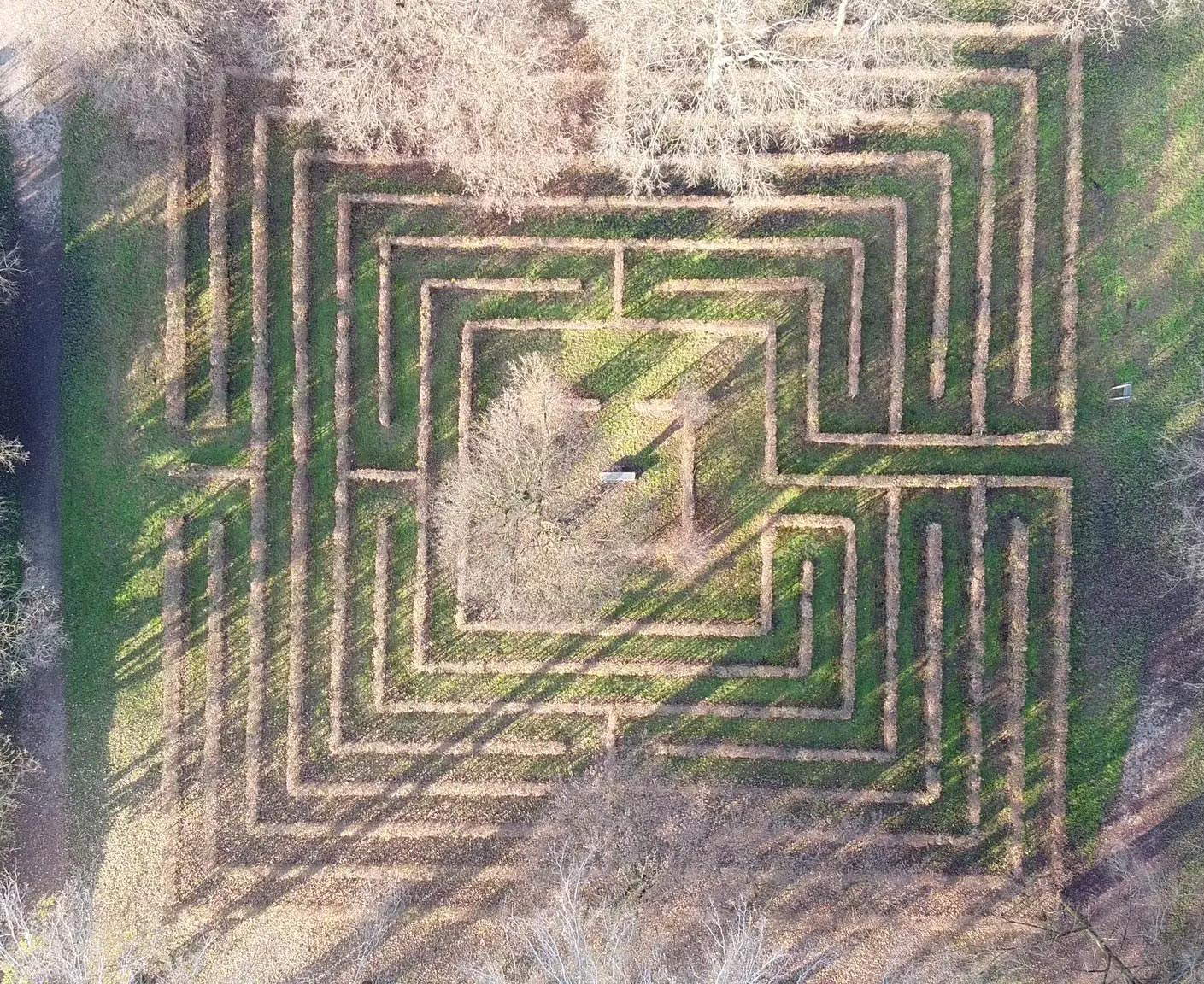
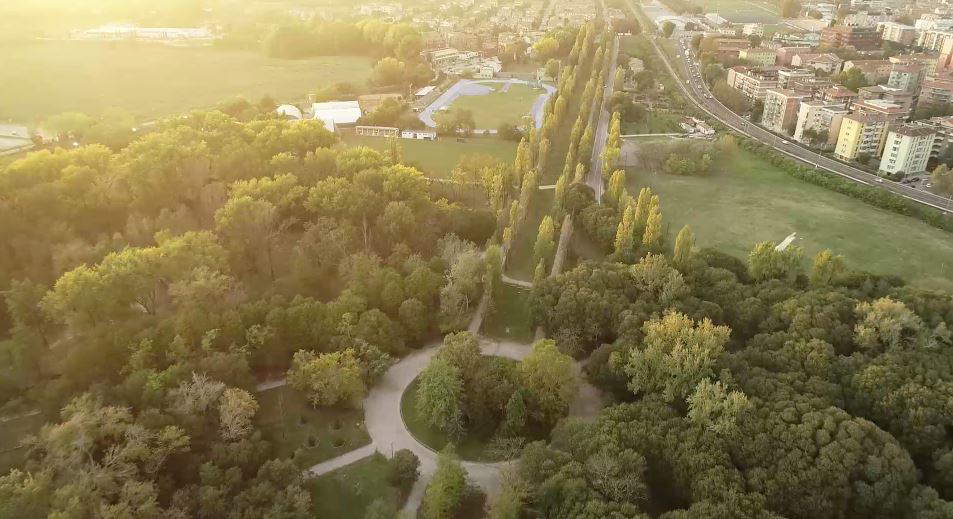
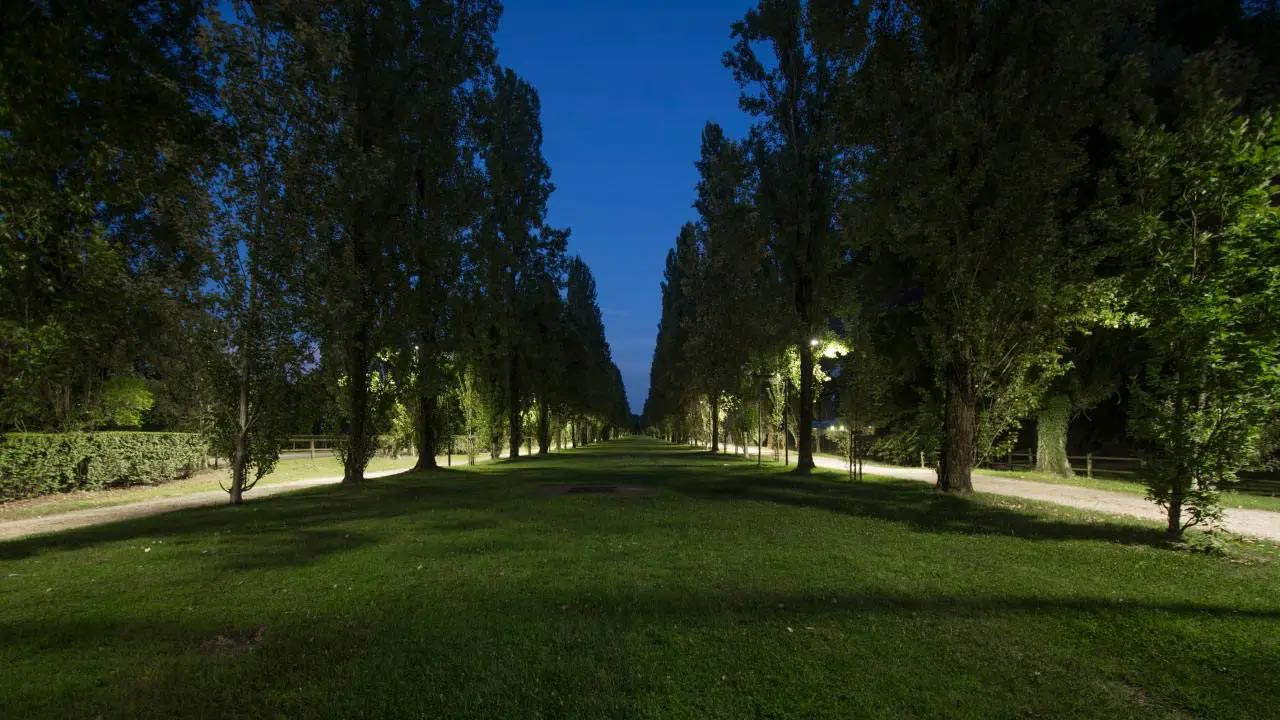
The project dates back to the late 1920s and was designed by Piedmontese architect Giuseppe Roda (Racconigi, 1866 - Turin, 1951), who had long experience in designing green spaces (he had already worked in the Savoy royal palaces and at the Quirinale): it was he who won the competition by invitation that in 1929 the Municipality of Mantua, on the initiative of Arnaldo Mussolini, Benito’s brother and at the time president of the National Forestry Committee, had called to award the task of designing the Virgiliano Woods on the area of state property that, however, the Municipality had received in concession. Roda, for the design of his large garden, was inspired by the groves of Renaissance palaces, imagining a park that would host all the botanical essences mentioned by Virgil in his works: having passed through the gate, one finds oneself in a wide monumental avenue, about 700 meters long, bordered by two long rows of cypress poplars, which leads toward a circular square in the center of which stands the bust of Virgil, placed in the center of the park as a tribute to the poet. From the square radiate paths leading into the forest proper, and not far away, is the labyrinth, which has a structure quite similar (though enlarged) to that of the labyrinth on the ceiling of the Ducal Palace.
With a desire to refer to the seventeenth-century mazes of greenery, Giuseppe Roda imagined a labyrinth whose walls were made up of tree essences, and he chose a very particular species, the white horn beam(carpinus betulus of the betulaceae) later replaced by the administration in 1981 with the cherry laurel, which, however, was in turn permanently replaced in 2012 with the return to the original plant, after the park had fallen into a state of decay. The white hornbeam that therefore still forms the labyrinth today is a native species, a typical plant of the Po Valley that has a peculiarity: although it is a deciduous tree, the leaves do not fall off the plant during the winter, but remain attached to the branches (they will then be replaced by new buds in the spring). As a result, in the cold months, the labyrinth does not lose its leaves but takes on the typical autumn coloration, and for this reason the hornbeam was often chosen in Baroque gardens. Therefore, a peculiarity that makes the labyrinth of Bosco Virgiliano stand out among the many mazes of greenery that can be visited in Italy today.
In addition, the path of the labyrinth (which is one of the largest in Italy) is also very peculiar, because it is not a labyrinth with an obligatory path, equipped with only one entrance that leads irretrievably to the center. There are as many as four entrances, and it may be the case that by choosing one track you do not reach the center of the maze, but come out of the opposite entrance, since the paths are not necessarily connected to the center (to get an idea you can watch a nice video made by Gravel Club). It may therefore happen that, at some point, the path takes the visitor back to his own steps and leads him out of the labyrinth: there is in fact only one way that leads to the heart. And it is up to the visitor to find it... !
 |
| The labyrinths of Mantua, between the Ducal Palace and the Virgilian Woods |
Warning: the translation into English of the original Italian article was created using automatic tools. We undertake to review all articles, but we do not guarantee the total absence of inaccuracies in the translation due to the program. You can find the original by clicking on the ITA button. If you find any mistake,please contact us.